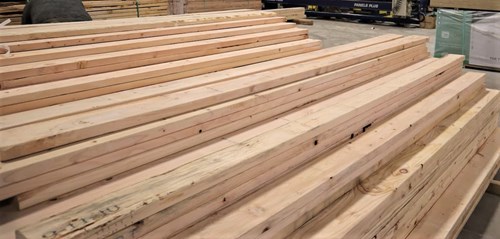The Impact of COVID-19 on Lumber Prices
COVID-19 has brought many challenges and changes throughout the past year—while the construction industry is booming, lumber prices also continue to soar.
Many are wondering: why is there a sudden increase in lumber prices and when will they start to decrease? The answer to these questions is not simple, but before you try to determine the future of the lumber industry, it is important to look at where the industry is right now and the contributing factors.
Why the Increase in Lumber Prices?
Along with Colorado, the entire country has seen price increases in both lumber and oriented strand board (OSB). Per the National Association of Home Builders, lumber has increased 180% and OSB 250% since last spring.
Just like any other product, lumber price increases are based on two factors: consumer demand and supply chain.
1. Consumer Demand
The first big factor in the lumber price increases is consumer demand. Lower interest rates due to COVID have created a strong demand for home loans, leading to demand for new home construction which is contributing to the limited supply of new homes.
Another point COVID-19 has done for the building materials and construction community is create a surge in interior and exterior home renovation projects—these projects, both DIY and contracted, stem from the high amount of people working from home. To create a home office space or simply DIY for something to do during quarantine, more homeowners are reallocating dollars to home improvement projects. Of course, more projects and need for lumber drives demand and prices.
2. Supply Chain
Now that we’ve covered the consumer demand side of the lumber price increase, it’s time to look into the supply chain. The lumber supply chain is currently affected by the following factors:
- Reduction in supply from Canada
- Container backlog at major ports driven by COVID;
- Increase material demand from overseas;
- Lumber mills catching up with production due to COVID shutdowns; and
- California wildfires.
For example, since April 2020 lumber and OSB price increases have driven the cost of building an average new single-family home up by more than $24,000 with multi-family homes up $9,000. Although the supply chain for lumber continues to be impacted by COVID-related issues, there is hope for the supply chain and a reduction in future lumber prices.
Future Lumber Prices
With no decrease of demand in housing or DIY/home remodeling projects predicted, the key to price stability is when supply can be normalized, supply chain issues minimize. Once the backlog at entry ports is cleared up, lumber from overseas can fill the lumber supply gaps, which should help reduce lumber prices late 2021 or early 2022.
Contact a Denver Lumber Expert Today to Help with Your Project
At Direct Lumber and Door, we have an experienced team of lumber buyers who continually monitor market prices and lumber futures. Our insight into the lumber market and the trust that our customers have in our team is what defines our customer service at DLD.
For more information about lumber lead times and prices or for help with your project, contact us today.
